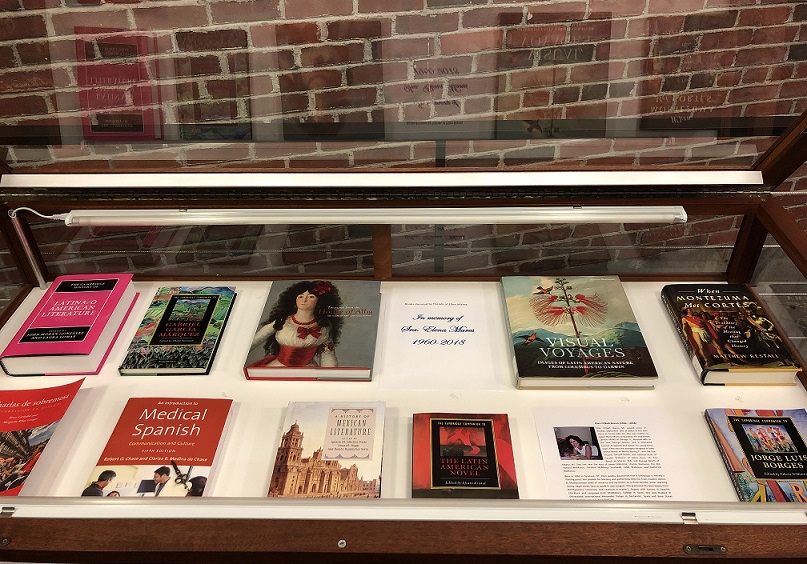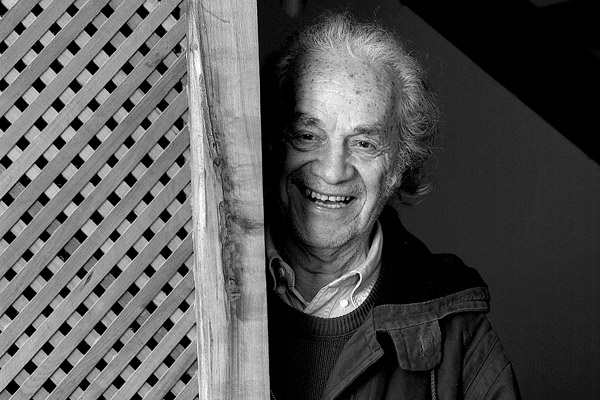Donaciòn «in memorian» de la Sra. Elena Mares.
La biblioteca del Instituto Cervantes ha recibido de parte de los amigos de Mrs. Ellen Mares una donación de libros en su memoria.
«Nacida en Syracuse, Nueva York, en 1960, Ellen descubrió rápidamente que un lugar de nacimiento es simplemente un punto de partida. Su pasión por aprender y actuar la llevó desde la danza moderna, a las tierras mediterráneas del romance y el misticismo, a una carrera de tres décadas que enseña a mentes jóvenes y entusiastas a hablar en nuevas lenguas. Se graduó en Phi Beta Kappa de la Northwestern University y recibió una maestría con honores en Literatura y Lengua en Español del Middlebury College en España. También estudió en la Universidad Internacional Menéndez Pelayo en Santander, España y en Bank Street College of Education en Nueva York, NY.
Ellen pasó su vida erudita y amante de los muchos idiomas del mundo. Soñó y habló en español, italiano, rumano e inglés, y también entendió los idiomas universales de la danza, el teatro y el arte. Ella compartió este ardor con su familia, amigos y estudiantes. Ellen entendió que la enseñanza del idioma era mucho más profunda que el vocabulario y la gramática. A lo largo de los años, docenas de sus alumnos le expresaron cómo los abrió a historias y experiencias y otros mundos.»
Extracto del artículo publicado en NYTimes.com Sept. 19 to Sept. 20, 2018

«Born in 1960 in Syracuse, NY, Ellen quickly discovered that a birthplace is merely a starting point. Her passion for learning and performing took her from modern dance, to Mediterranean lands of romance and mysticism, to a three-decade career teaching young, eager minds how to speak in new tongues. She graduated Phi Beta Kappa from Northwestern University and received a master’s degree with honors in Spanish Literature and Language from Middlebury College in Spain. She also studied at Universidad Internacional Menendez Pelayo in Santander, Spain and Bank Street College of Education in New York, NY.
Ellen spent her life a scholar and lover of the many languages of the world. She dreamt and spoke in Spanish, Italian, Romanian, and English, as well as understood the universal languages of dance, drama, and art. She shared this ardor with her family, friends, and students. Ellen understood that teaching language was far deeper than vocabulary and grammar. Over the years, dozens of her students expressed to her how she opened them up to stories and experiences and other worlds.»
Extracted from the obituary published on NYTimes.com from Sept. 19 to Sept. 20, 2018
Nicanor Parra (1914 – 2018)
Nicanor Parra Sandoval, creador de la antipoesía, falleció a los 103 años, tras una vida de reconocimientos entre los cuales se cuentan el Premio Nacional de Literatura en 1969, el Premio Iberoamericano de Poesía Pablo Neruda en 2012, el Premio Juan Rulfo en 1991, el Reina Sofía en 2001 y el Premio Cervantes, en 2011, máximo galardón de la literatura en lengua hispana.
El mayor del clan Parra, nacido en San Fabián de Alinco en 1914 y criado en el seno de una familia campesina, publicó su primer libro a la edad de 21 años, en 1935: “Cancionero sin nombre”.
Aunque estudió matemáticas y física, fue su búsqueda y experimentación literaria la que lo hizo conocido por su estilo único y rupturista. Fue en 1954 con la publicación de «Poemas y Antipoemas» que presentó la propuesta literaria que lo caracterizó y lo llevó a desarrollar un legado que fue reconocido con los premios literarios y distinciones más relevantes.
En nuestra biblioteca hemos realizado una exposición bibliográfica que puede visitarse hasta el 20 de febrero. Accede aquí a la bibliografía
Visita el sitio de la Biblioteca Nacional de Chile
Nicanor Parra Sandoval, creator of the «anti-poetry», died at the age of 103, after a lifetime of recognitions including the National Literature Prize in 1969, the Pablo Neruda Ibero-American Poetry Prize in 2012, the Juan Rulfo Prize in 1991, the Reina Sofía in 2001 and the Cervantes Prize, in 2011, the highest award for literature in the Spanish language.
The oldest of the Parra clan, born in San Fabián de Alinco in 1914 and raised in a peasant family, published his first book at the age of 21, in 1935: «Cancionero sin nombre».
Although he studied mathematics and physics, it was his search and literary experimentation that made him known for his unique and disruptive style. It was in 1954 with the publication of «Poemas y Antipoemas» that he presented the literary proposal that characterized him and led him to develop a legacy that was recognized with the most important literary prizes and distinctions.

